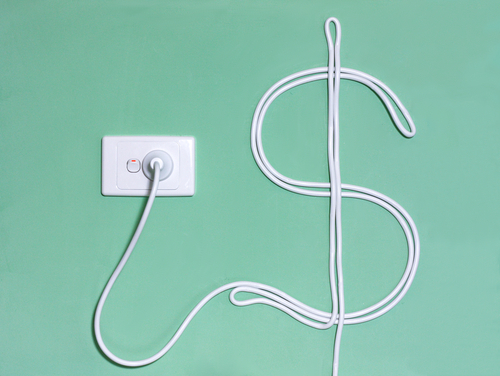22 March 2018
How much does stand-by mode really cost?
Stand-by mode receives a lot of attention in terms of energy consumption and bills. However, it’s still a grey area and many people don’t know the impact it really has on their bills.
So how much does standby mode really cost?
The answer is; it depends.
Individually, most appliances draw a very small amount of energy when on standby. These appliances are the ones you typically leave on standby for convenience. Any appliance with a remote, LED light/clock, touch button etc, only needs enough power to run the sensors so that you can turn the appliance back on.
Then there’s the matter of old vs new appliances. Newer appliances are more energy-efficient but the savings you see from upgrading them will depend on the type of appliance, how old your replaced appliance is in respect to the new appliance, and its energy rating.
Appliances to look out for on standby mode are ones that run background tasks while in “sleep” mode. An example would be a laptop that’s on and charging, games consoles or voice-activated devices. These are usually running updates, connected to WiFi and performing background tasks even while you’re not using them.
According to a study by the Australian Government Department of Industry, Innovation and Science, standby mode accounts for approximately 3% of a household’s total energy bill.
With that said, you could still see a saving from turning off things like computers, game consoles, home assistants and charging bays for things such as cordless vacuums and sleep mode laptops.
However, these savings may only be small compared to other things you can do to make an impact on your bill. For example;
Air conditioning
This can account for up to 40% of a typical Australian household’s energy usage 1. We all know that Brisbane weather can be unbearable, and sometimes you just can’t beat the heat. When using your air conditioner set it to an energy-efficient temperature. The rule of thumb is; the higher you set the temperature in summer and the lower you set it in winter, the more energy-efficient it is. This is because it isn’t working as hard to reach a comfortable temperature.
Switch from halogen to LED lighting.
Changing halogen downlights to LED can save you up to $25 per year, per light. LED downlights are also a safer option as they conduct less heat than halogen. Halogen downlights have been known to overheat and cause house fires in some cases, especially where they have not been installed properly and come into contact with insulation and other flammable roof materials.
Water heating
Hot water is the second biggest culprit to your total energy usage 1. Make sure that you have the right size and type for your household and typical usage. For example; a hot water system that is too big will be heating excess water that you don’t use, too small and it will work too hard to heat all the water you need. You could also benefit from adjusting your thermostat. Speak to a licensed plumber if you’re unsure of your thermostat setting or whether your hot water system is the correct size. A plumber is best to assess your current system and usage and make a suitable recommendation.
You can also try to cut down the length of your showers, avoid baths and either use the eco setting on your dishwasher or turn the tap off and wash up in a bowl.
Consider investing in newer, more energy-efficient appliances
You could save a considerable amount on your bills by upgrading your older appliances. The government now offers rebates on energy-efficient Washing Machines, Fridges and Air Conditioning systems, so now is a great time to upgrade.
More on information standby power use
The best way to find out what has the most impact on your energy usage and how to save money is to have an energy audit by a licensed electrician. They can assess all your appliances, connections and give advice on solutions to make your home more energy-efficient, saving you money each year.
To book an energy audit with one of our licensed electricians, call us on:
1. Energy use in the Australian residential sector 1986-2020 report by government DIIS.
Suggested articles
No articles found

